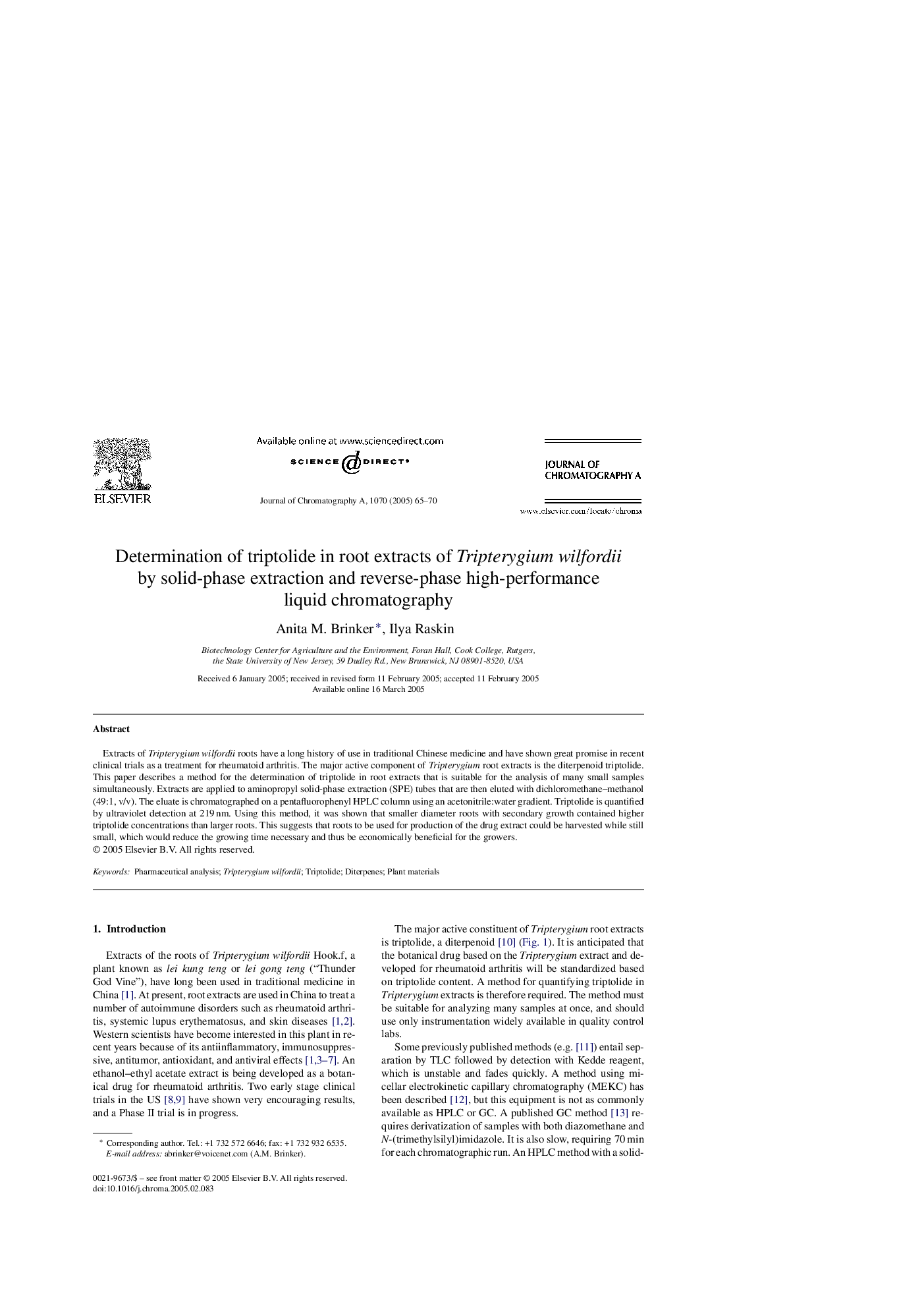| Article ID | Journal | Published Year | Pages | File Type |
|---|---|---|---|---|
| 9749219 | Journal of Chromatography A | 2005 | 6 Pages |
Abstract
Extracts of Tripterygium wilfordii roots have a long history of use in traditional Chinese medicine and have shown great promise in recent clinical trials as a treatment for rheumatoid arthritis. The major active component of Tripterygium root extracts is the diterpenoid triptolide. This paper describes a method for the determination of triptolide in root extracts that is suitable for the analysis of many small samples simultaneously. Extracts are applied to aminopropyl solid-phase extraction (SPE) tubes that are then eluted with dichloromethane-methanol (49:1, v/v). The eluate is chromatographed on a pentafluorophenyl HPLC column using an acetonitrile:water gradient. Triptolide is quantified by ultraviolet detection at 219Â nm. Using this method, it was shown that smaller diameter roots with secondary growth contained higher triptolide concentrations than larger roots. This suggests that roots to be used for production of the drug extract could be harvested while still small, which would reduce the growing time necessary and thus be economically beneficial for the growers.
Related Topics
Physical Sciences and Engineering
Chemistry
Analytical Chemistry
Authors
Anita M. Brinker, Ilya Raskin,
